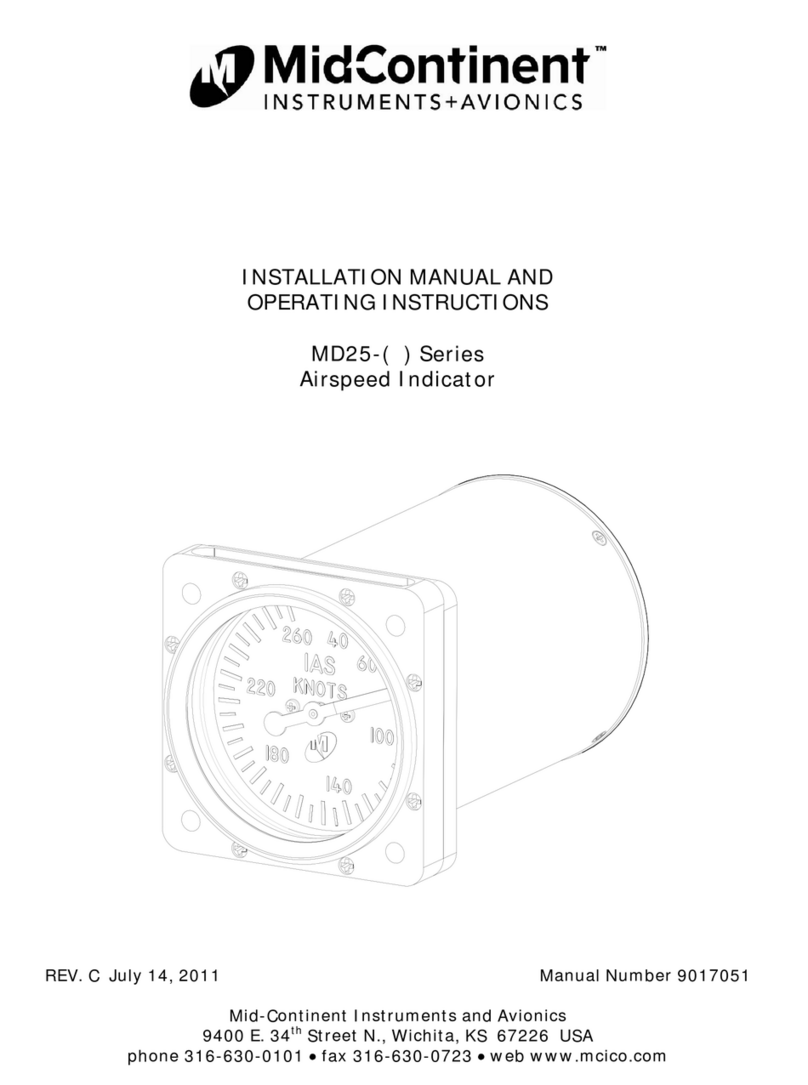MD23-342
User Guide
Mid-Continent Instruments and Avionics 2 User Guide UG342, Revision 1
October 11, 2022
1.1 INTRODUCTION
The model MD23-342 digital attitude Indicator is a standard 2-inch (2-¼”) panel-mounted
instrument that displays aircraft attitude related functions. Based on Mid-Continent Instruments
and Avionics patented FLEXTM Custom Function Display, this FAA and EASA TSO-approved
instrument brings a highly capable and modern addition to the cockpit to display required
information and provide useful supplementary functions.
This User Guide is a supplement to the Installation Manual and Operating Instructions (IM),
MCIA part number 9019161. The IM contains all information associated with the standard
product, including installation procedures, product specifications, operating instructions,
certification data, and maintenance requirements. This User Guide provides additional
information associated with the specific features of the multifunction digital attitude Indicator. It
addresses product identification, electrical pinout, initial configuration setup, and in-flight user
operation.
1.2 PRODUCT IDENTIFICATION
Each MD23 is comprised of certified hardware and certified software. Within the context of the
certified software is a set of data items that can configure and customize the behavior of the unit.
This set of data is referred to as a Custom Instrument Definition, or a CID file. The CID file for
this instrument is pre-loaded and may be available for future updates via a standard USB flash
drive through the programming port on the rear of the unit.
A unique CID number has been assigned specifically to this application. The CID is identified by
its two-digit number and an alphabetic character representing the CID version, starting with “A”.
The identification of the hardware, software, and CID configurations are listed below. Both the
software version and the CID can be viewed on the Introduction Screen during the first few
seconds of applying power to the unit. This information can also be accessed on the Info page of
the Options Menu during Flight Mode.
1.3 PRODUCT FUNCTION
The Multifunction Digital Attitude Indicator provides an artificial horizon display of the aircraft pitch
and roll attitude. It also displays aircraft slip and turn rate and, optionally, heading (if connected to
an external source of heading data via ARINC labels 320 or 014).
The unit can be configured by the installer to account for panel tilt, roll offset, roll scale, aircraft
symbol and heading display options.






























